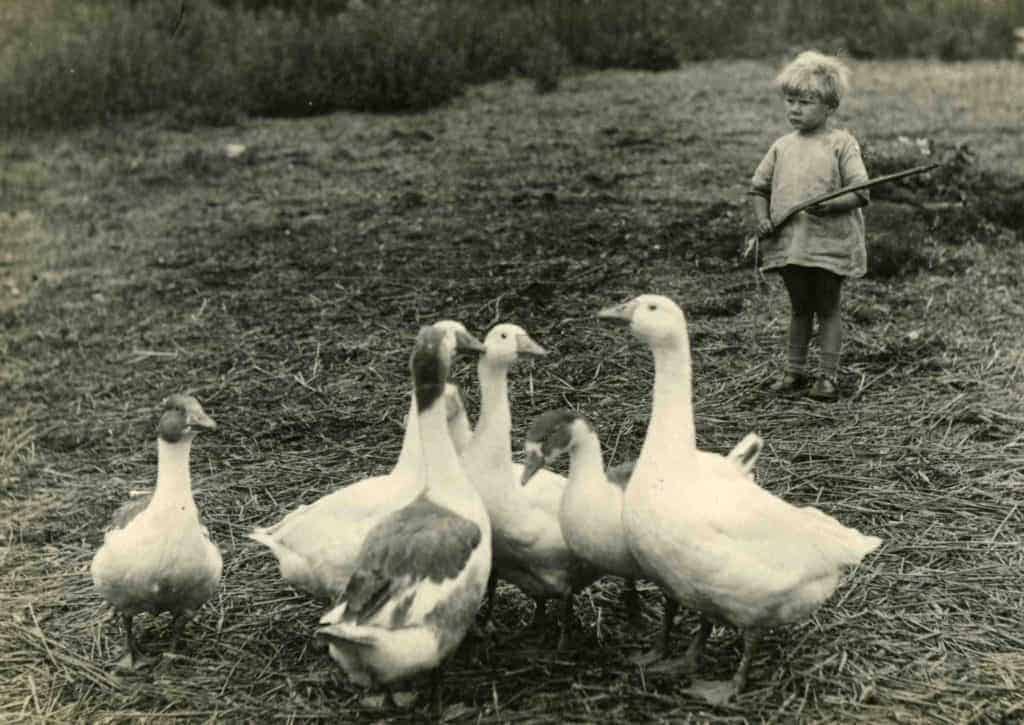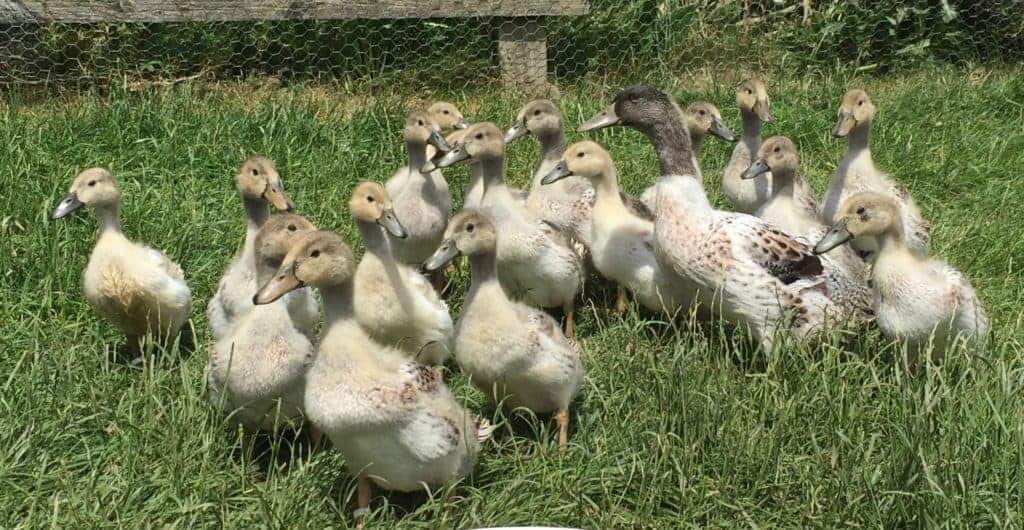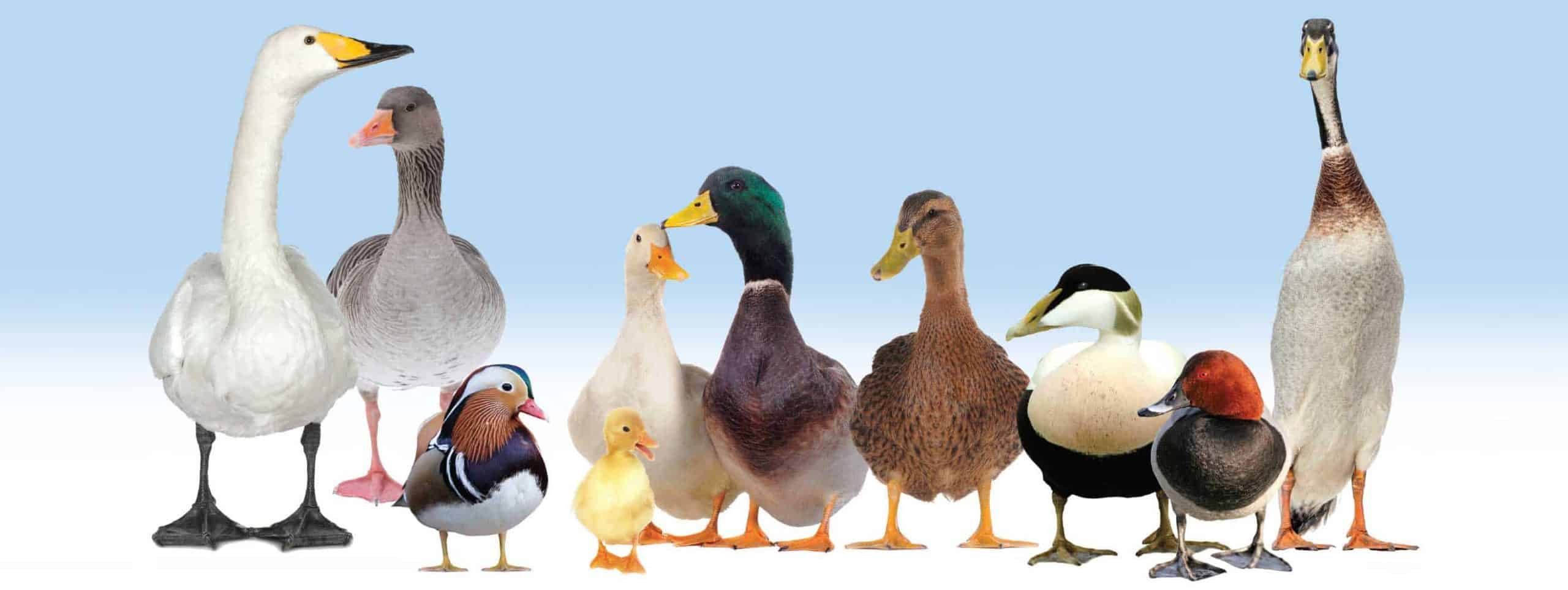
Domestic ducks and geese, (there are no domestic swans), have been selectively bred for meat, eggs or exhibition purposes. It is widely considered that all domestic ducks, with the exception of the Muscovy, have been bred from the Mallard, Anas platyrhynchos. Even in the wild Mallard, there is variation in shape, size and plumage. This is what enables the evolution of the species: mutation and natural selection. Most European breeds of geese are descended from the wild Greylag, Anser anser. However, in the Far East, the Chinese people developed two types of domestic geese from the wild Swan Goose Anser cygnoides.
Under domestication, the process of selection is rapid. Humans have selected characteristics resulting from specific mutations and encouraged such birds to breed. This has been going on for thousands of years resulting in the wide variety of domestic breeds seen today.

Ducks and geese are delightful birds and can give their owners much pleasure and enjoyment. They are hardy, very easy to keep and become trusting and responsive, particularly with children. There are a wide variety of breeds of duck from the smallest Call Duck, no larger than a pigeon, to the big majestic Aylesbury. Geese are useful as friends, guards and lawnmowers but require a larger enclosure than most ducks. All birds should be enclosed and protected from predators but only need simple housing. Keeping pure breeds of ducks and geese gives the opportunity to take part in preserving some of the old breeds of domestic waterfowl.



